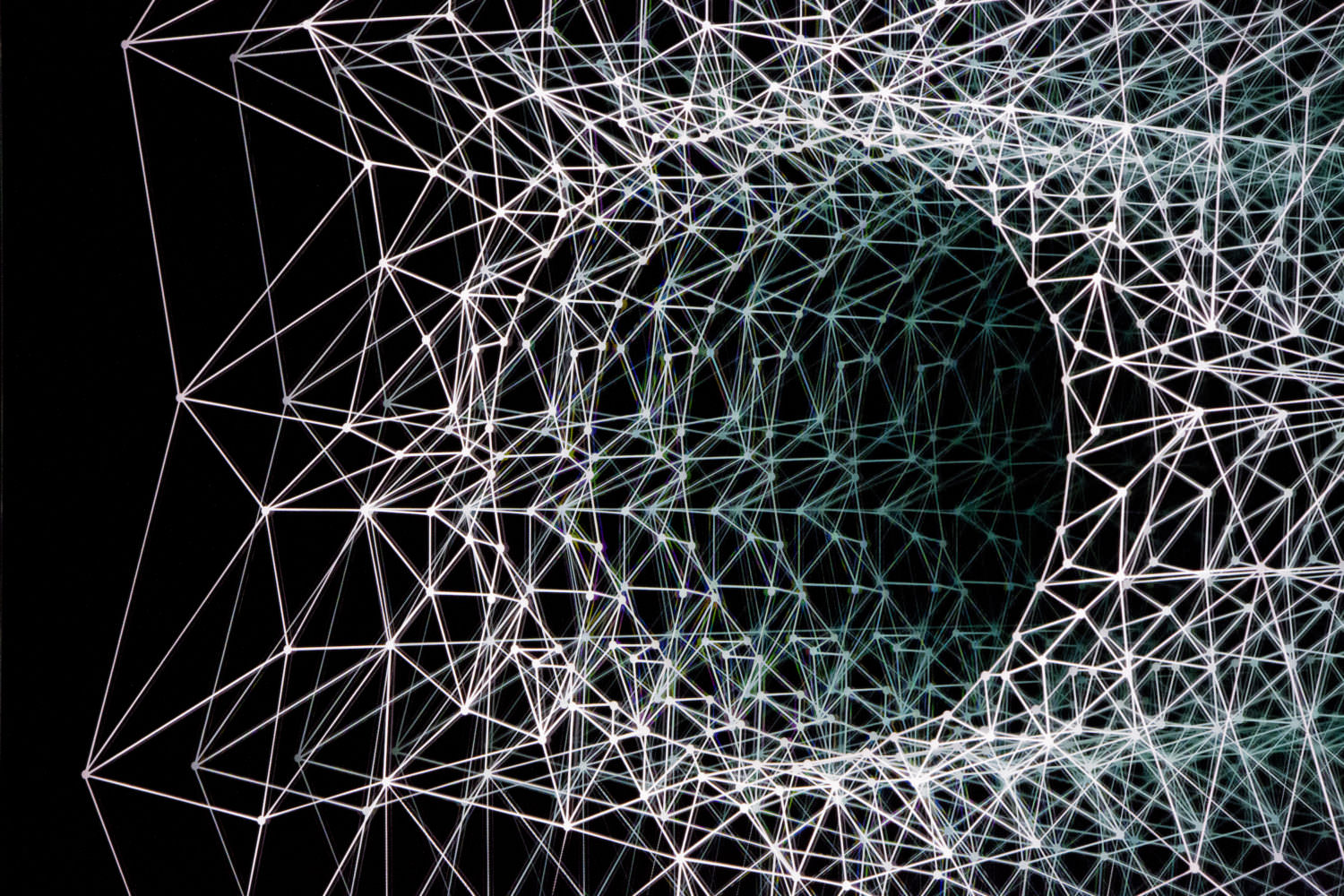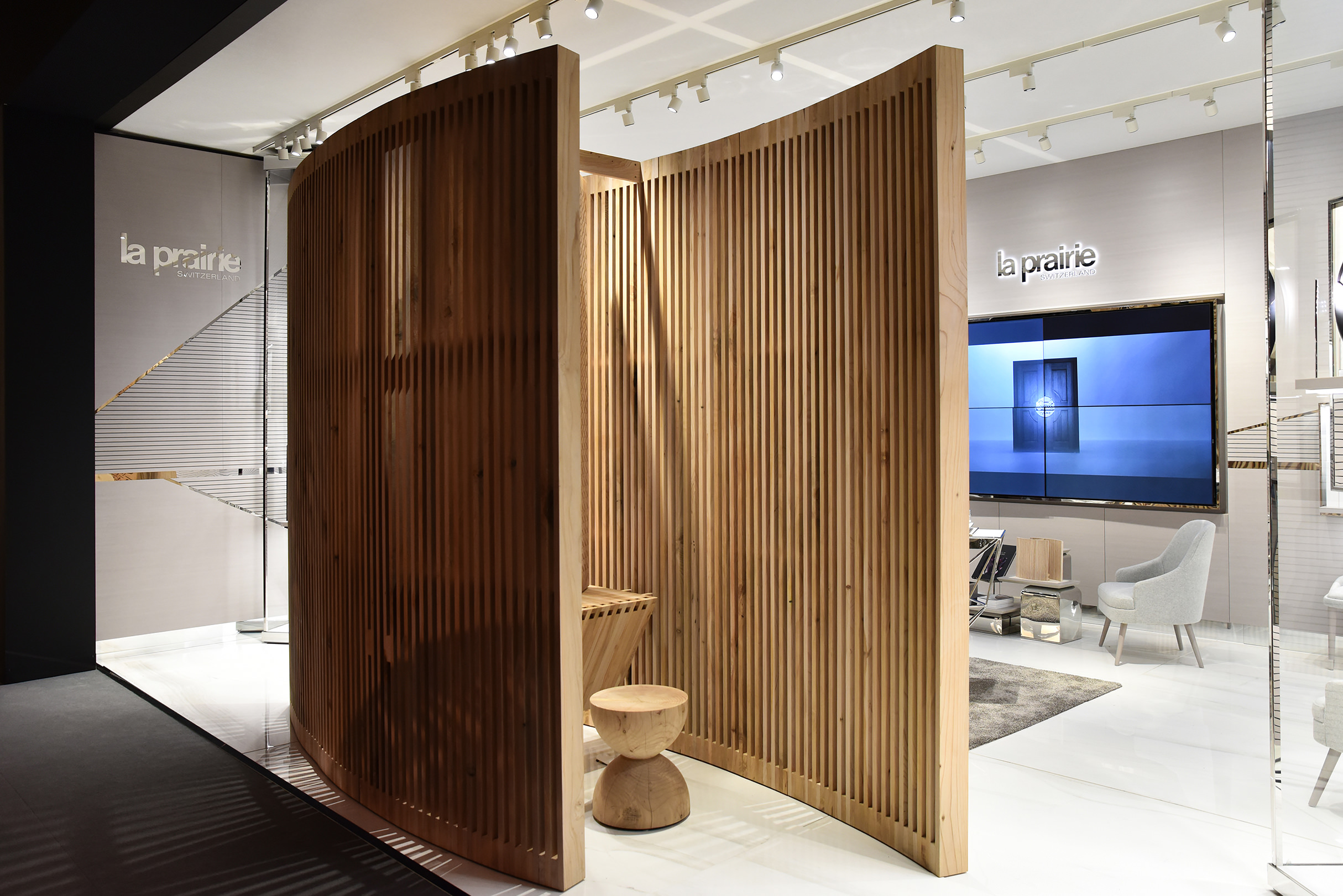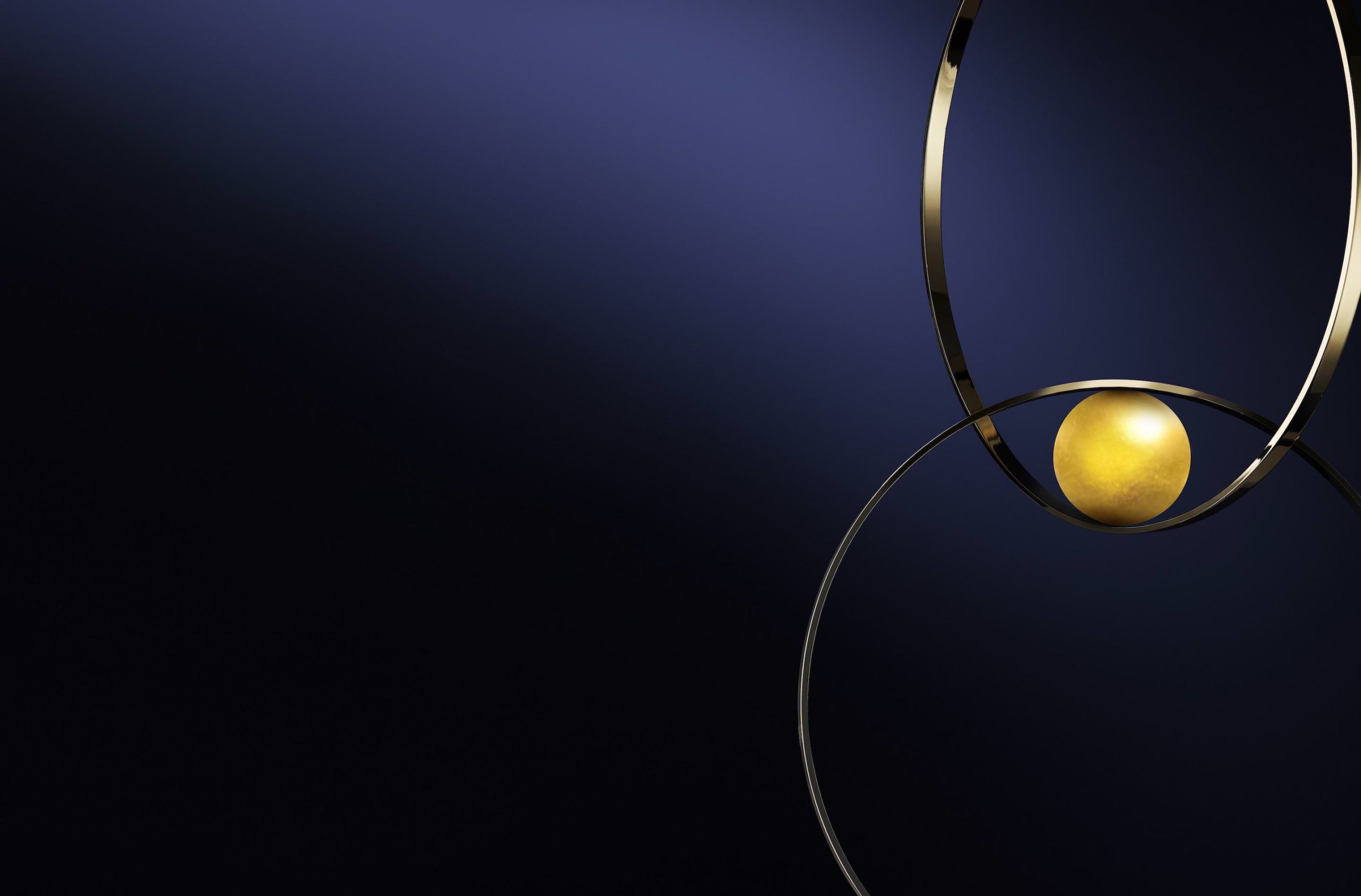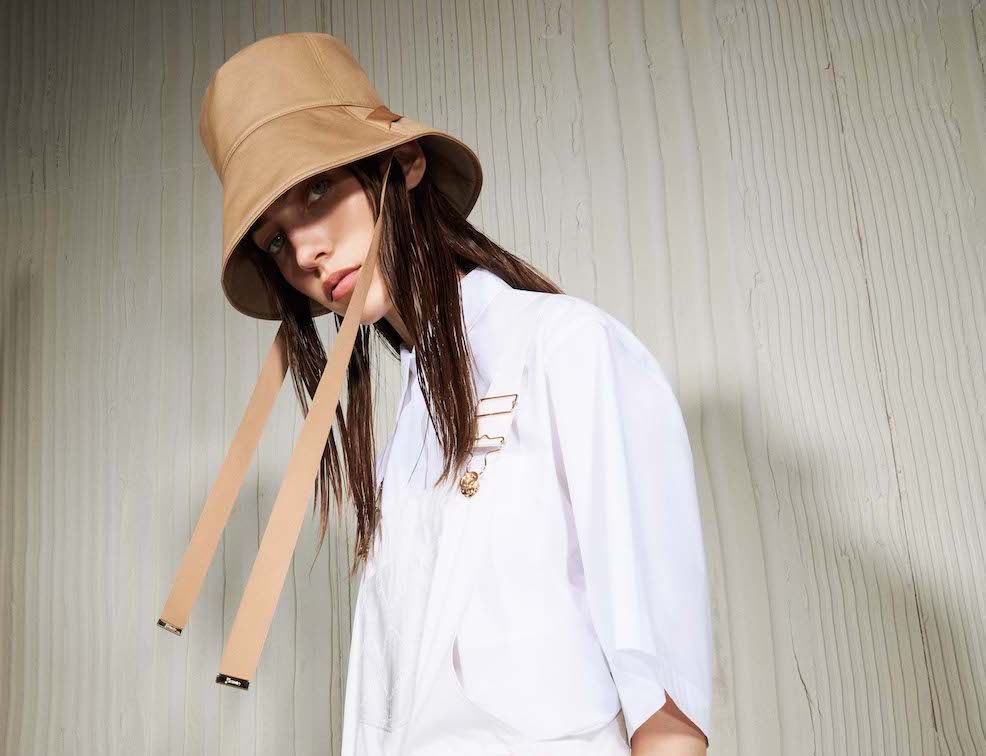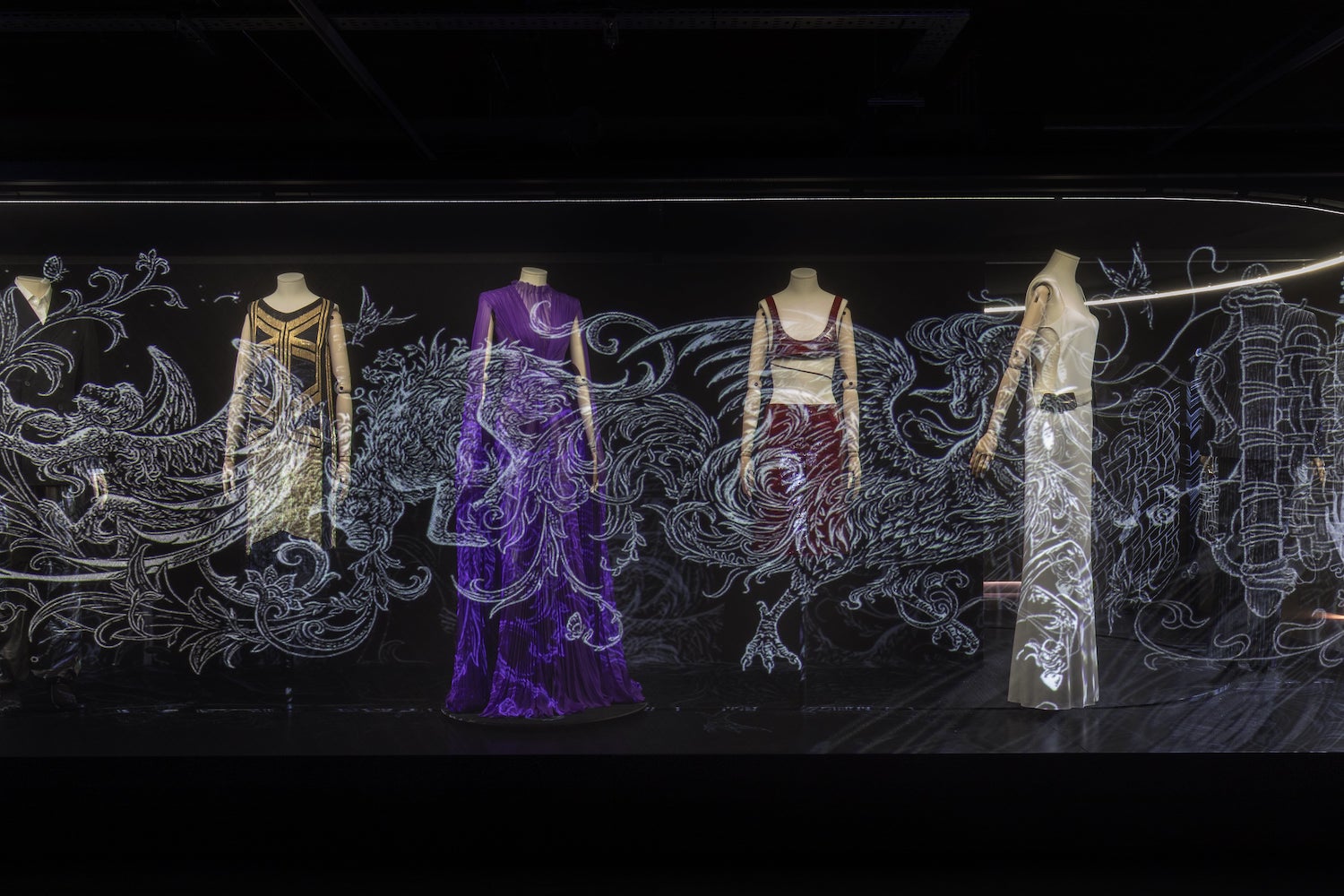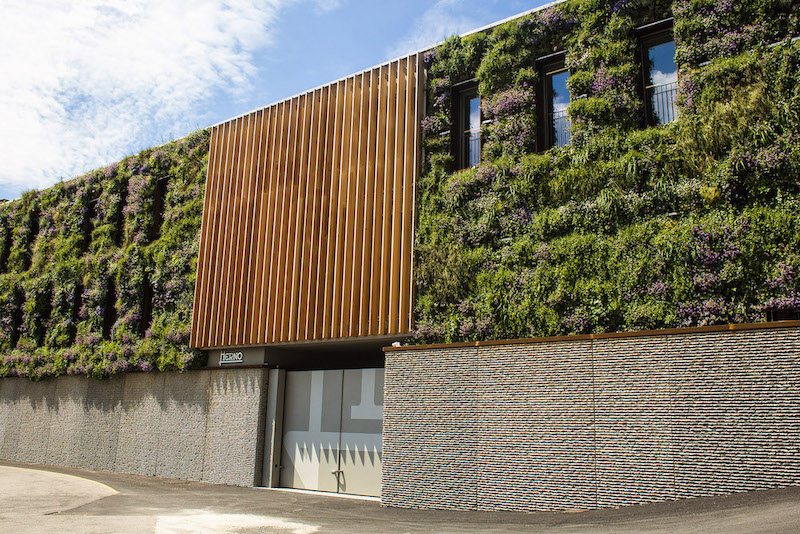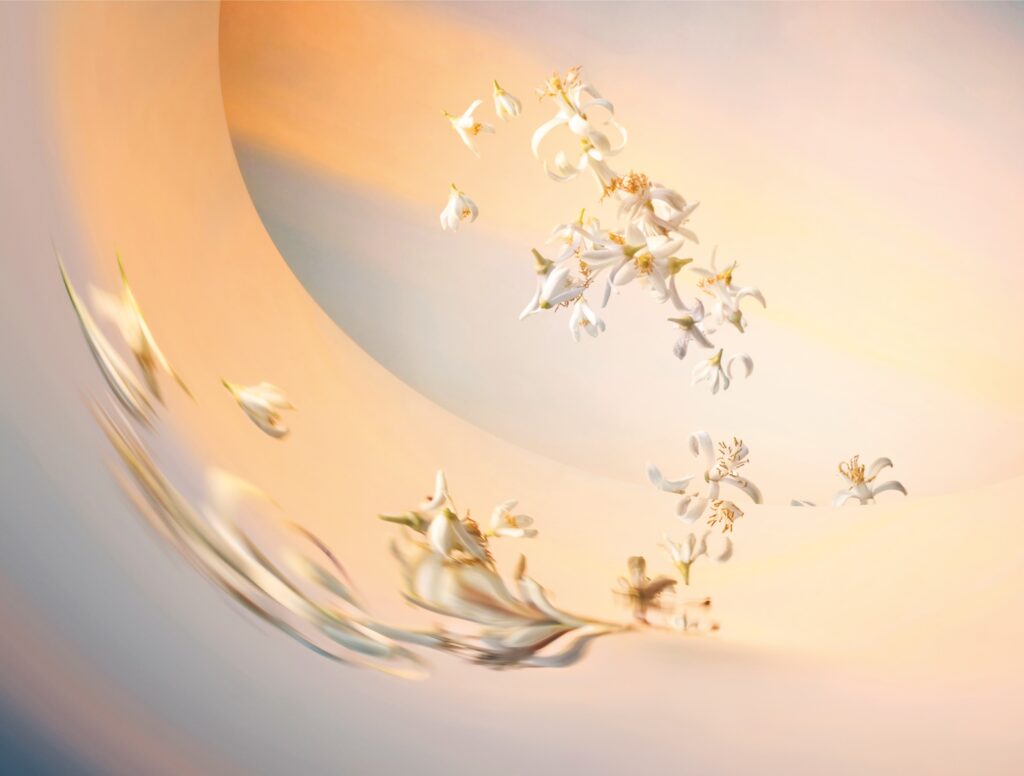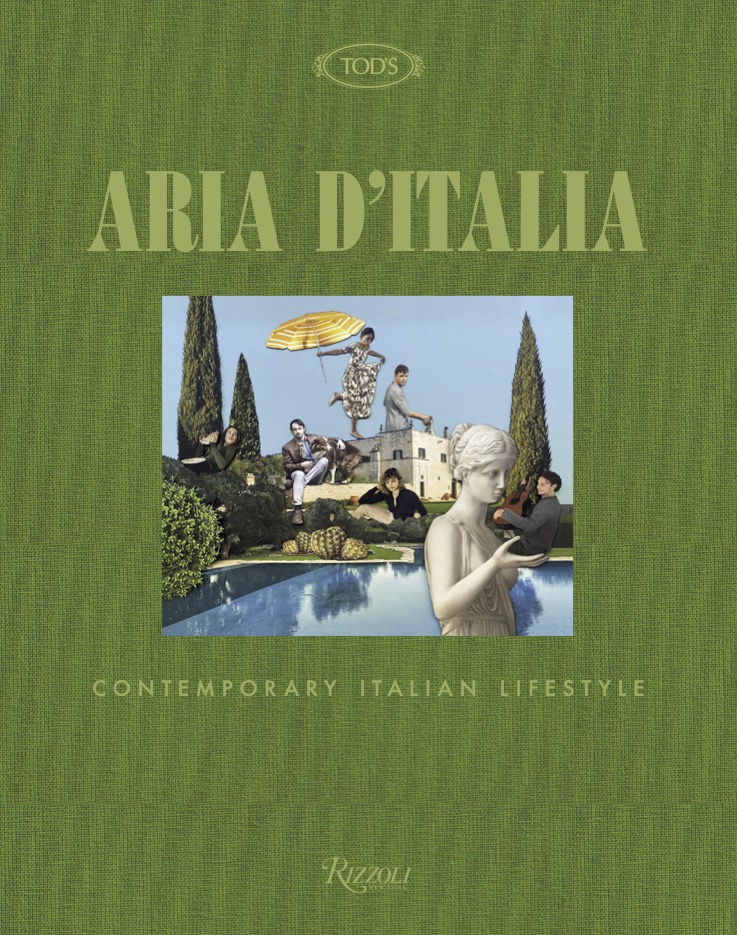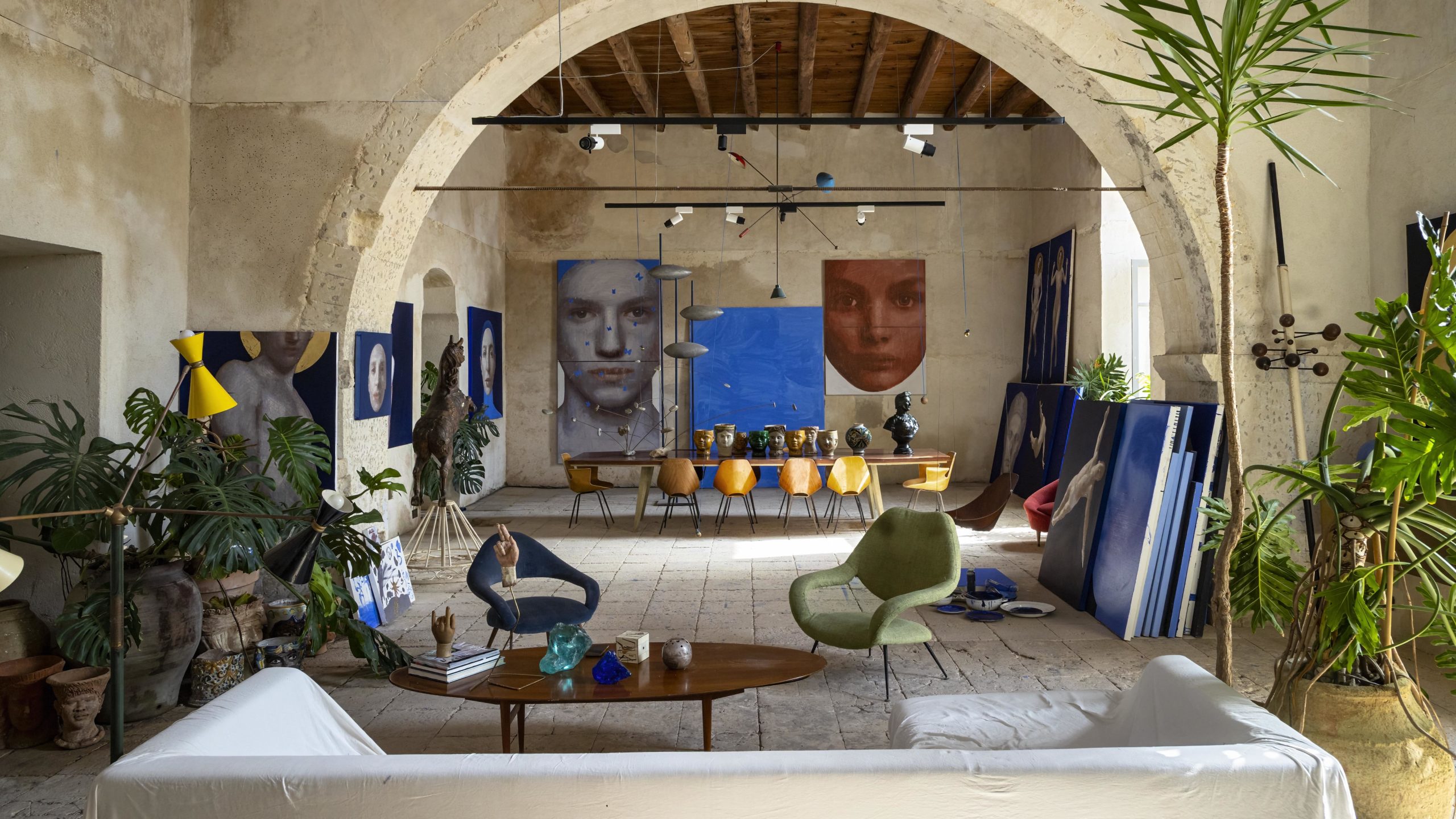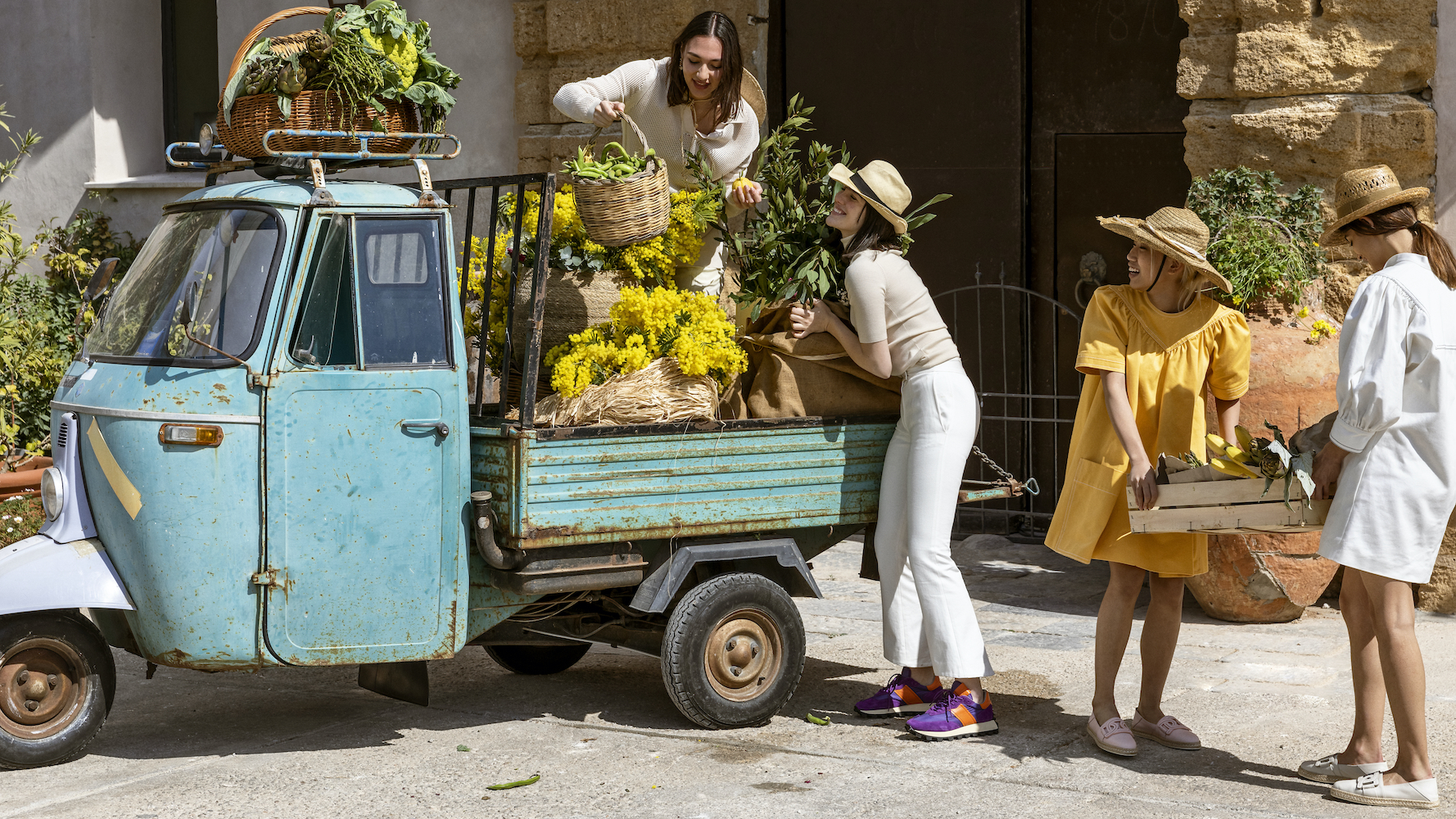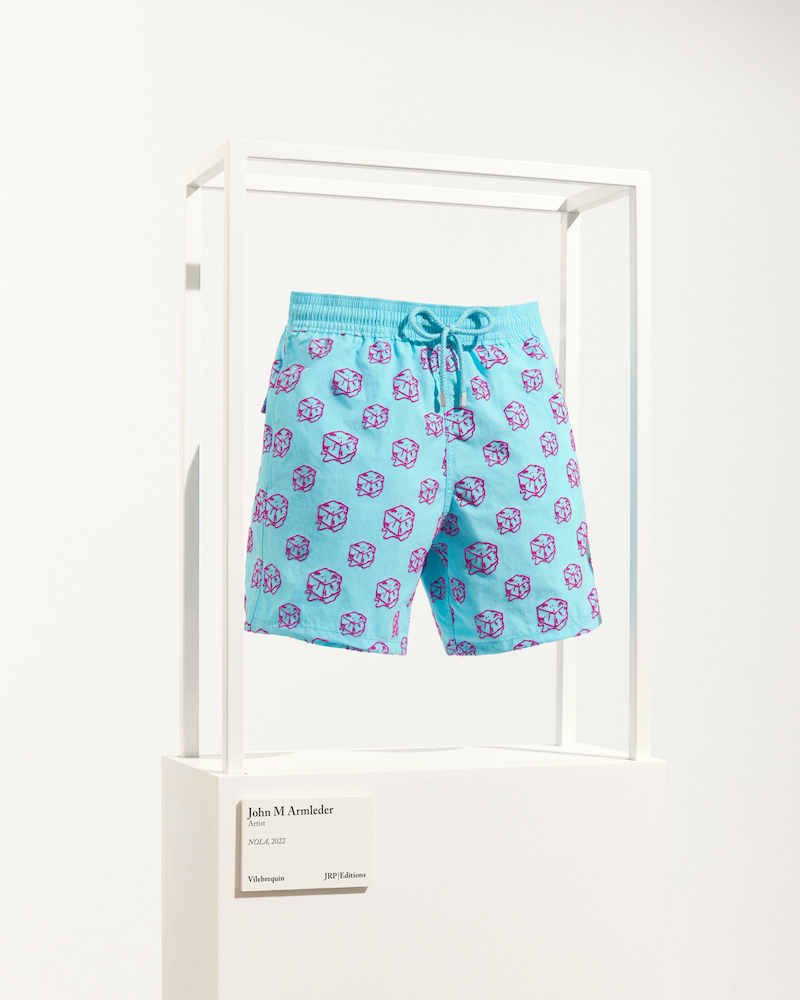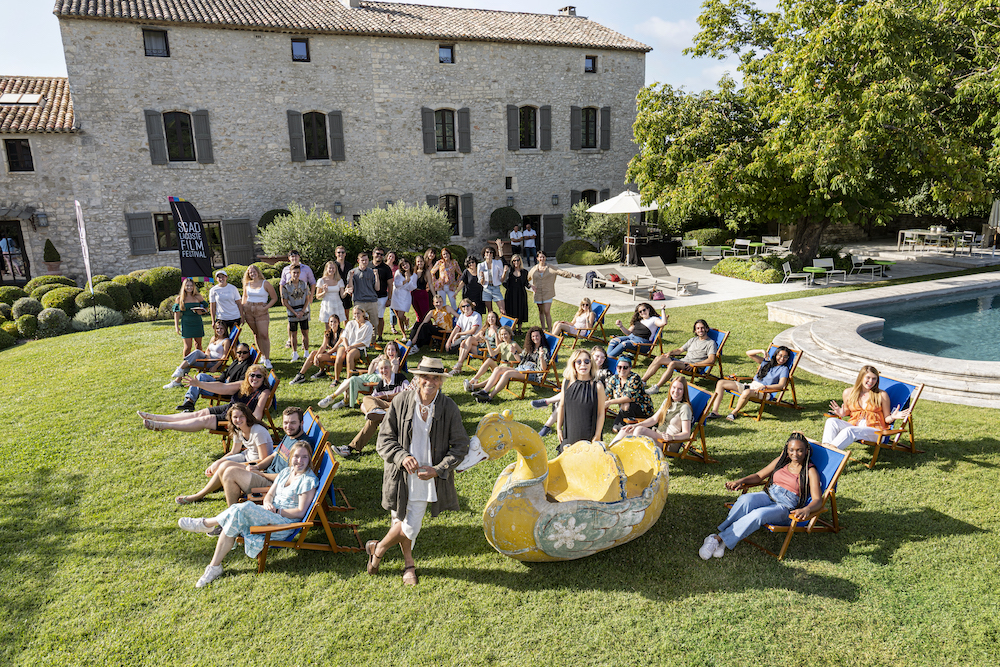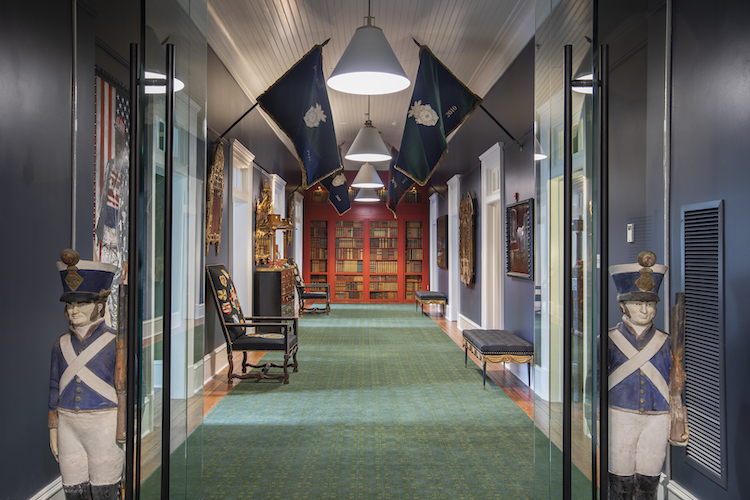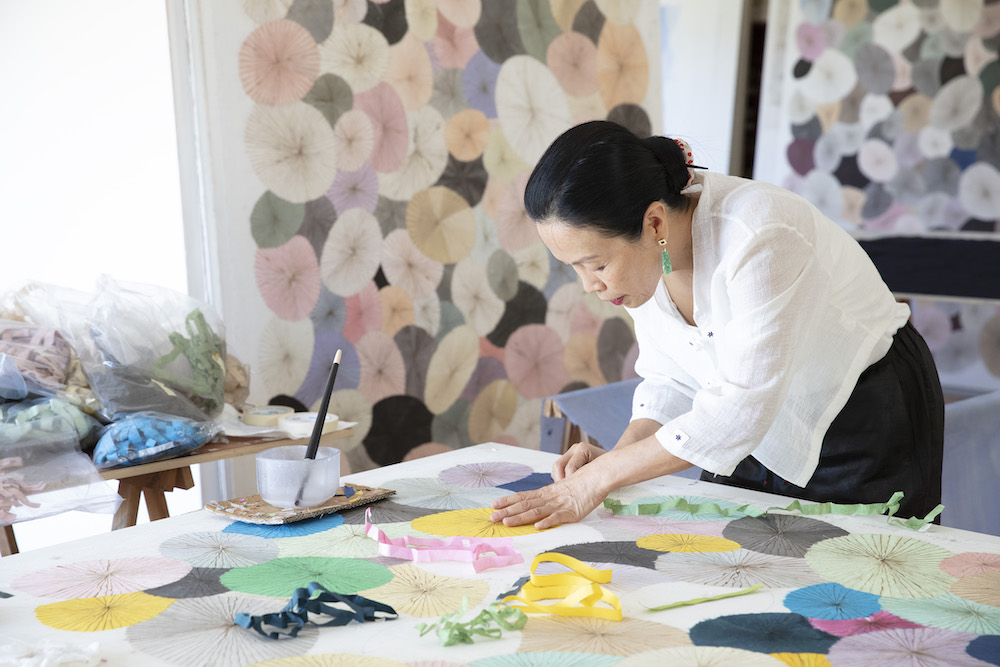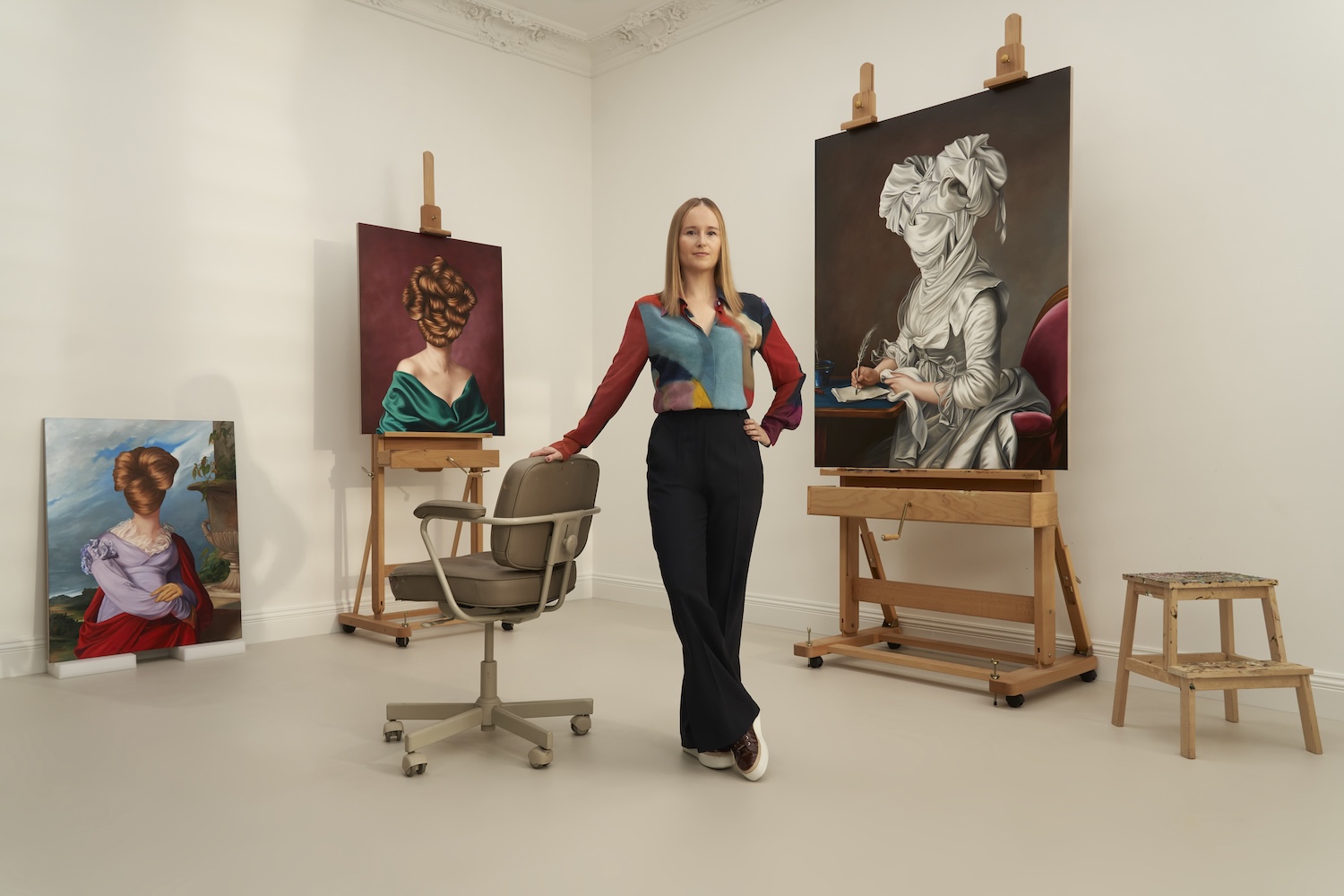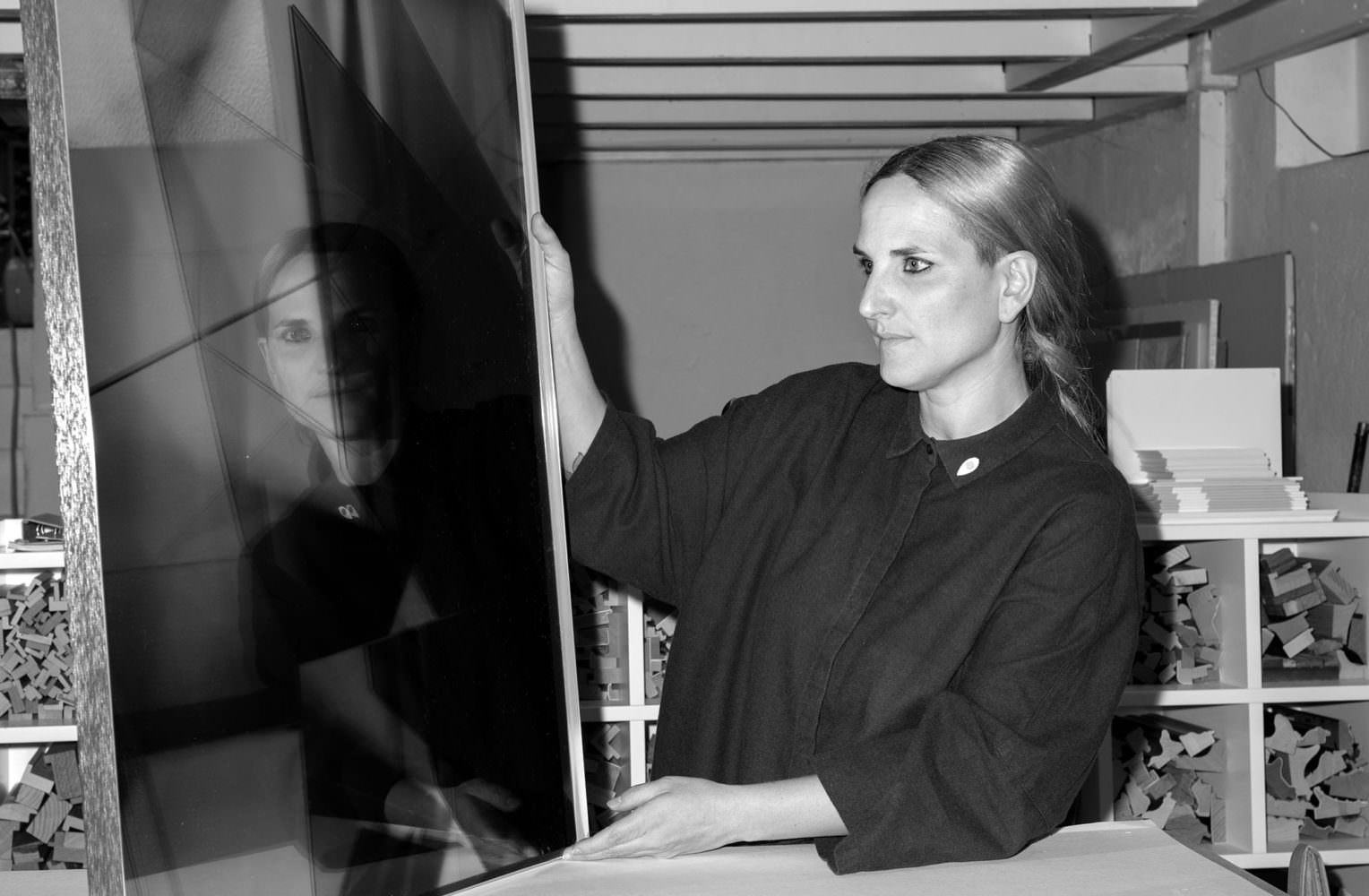
Daniela Droz, courtesy of La Prairie.
Daniela Droz knew early on that the wanted to be an artist. “I have always wanted to be a photographer without really knowing why. Since I was a teenager, I wanted to attend a photography school,” she said. “At the end of my studies I had to start working immediately to be able to live from this passion, so I did a lot of commissioned work for magazines, customers, and various brands.”
Since, her creative process has grown to show that photography goes beyond the idea that its purpose is solely for documentation. She erases material as much as possible to focus on the form, spotlighting shapes that are more or less visible through light. “Indeed, for me, the material that is the most essential is the light,” she said.
“I started to build these abstract structures for commissioned jobs. When I was asked to photograph some objects for a magazine for example, I spent more time building a décor than actually thinking about photographing the object. I created a world where the object could exist in the image. After several jobs, I told myself that I could afford to remove the object and take pictures of the décor only,” said Droz.
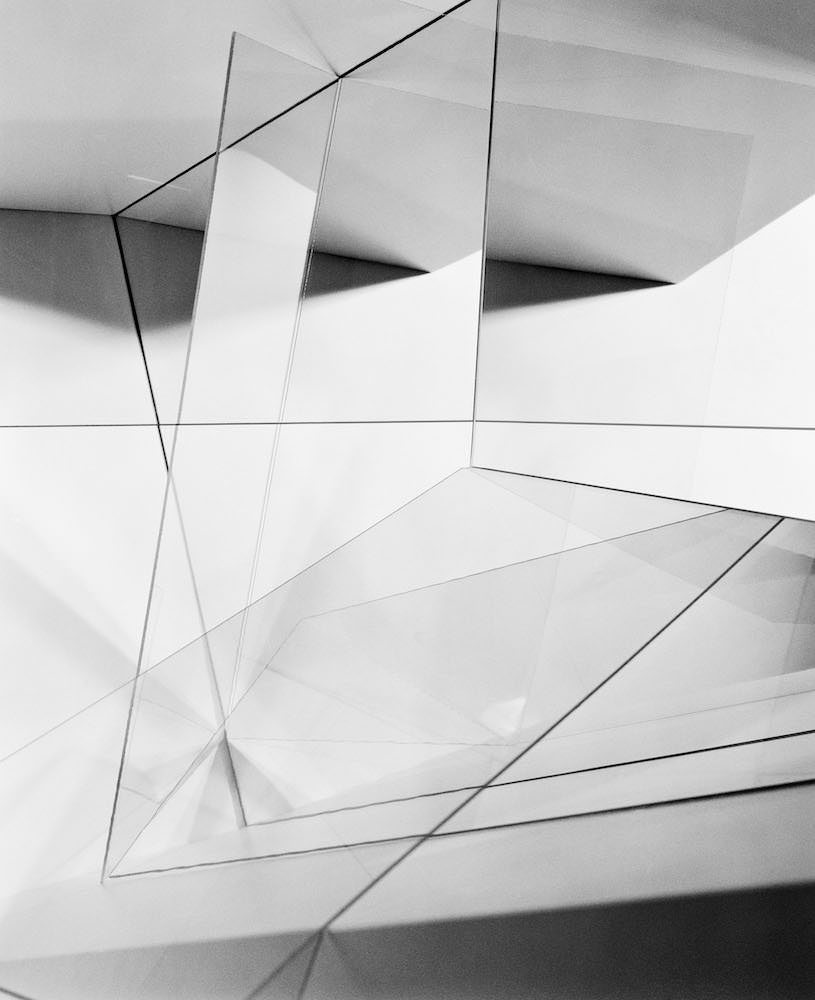
Daniela Droz,Résonance 01, courtesy of La Prairie.
Her first series in this direction was created between 2010 and 2012, entitled “Backgrounds.” Still today, her greatest source of inspiration is light—the kind that flows into domestic spaces to create a relationship between the inside and outside.
“I also love architecture, especially that which speaks of atmosphere and allows the visitor to live a personal experience, such as the architecture of Peter Zumthor or Tadao Ando,” she said. “For each new series I try to have a new point of view, which may be more related to form or light, but the components that make up my work are always the same. I use basic materials like glass plates or mirrors. The choice of materials is dictated by their ability to transmit light, reflect it or let it pass through.”
With her work, she also aims to let the work speak for itself and allow the viewer to be impacted however they may. “Through my work I don’t want to dictate a specific emotion or sensation. Why not just let yourself be carried away by a landscape—a sky through a window—and enjoy its beauty? I would like the viewer to take ownership of it, to experience it by looking at the image, like I had the privilege of experiencing when I created it,” she said.
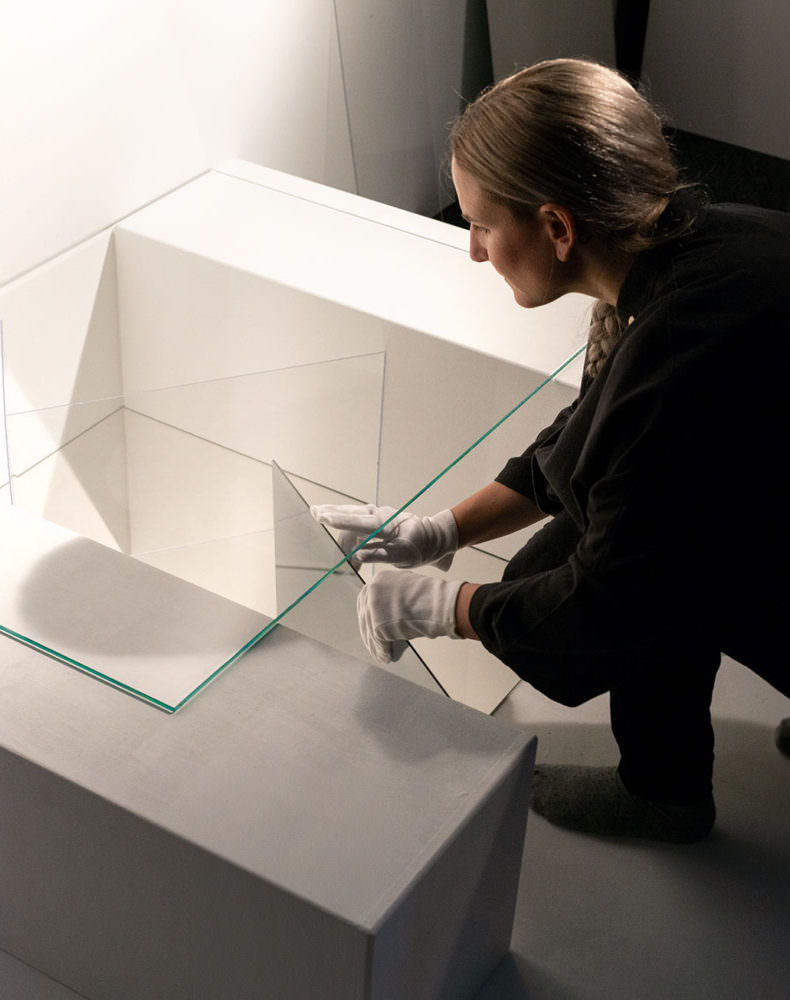
Daniela Droz, courtesy of La Prairie.
For “Eyes In Focus,” she’s thrilled to be included in the women-only exhibition, breaking down a small wall of gender barriers in the art world. “Even if we have reached a stage where we give more space to women in the arts, I think that there is still work to be done to overcome gender barriers. I think our works will be complementary though with totally different points of view, and I find it’s very rewarding. I work with abstraction and the other artists have a more portrait-based work and I like the idea of confronting these two types of aesthetics.”
In these new photographic works, Droz created works that reflected the gaze back onto the viewer. “I decided to try to interrogate the viewer’s gaze and turn her on herself,” she said. “I wanted to put more focus on new ways to take pictures, like in Constructivism or Bauhaus—with a new point of view, without respecting the rules of perspective and without respec¬ting the human vision, which always attempts to keep the horizon straight. The viewer will be completely lost in this new, unreal landscape.”
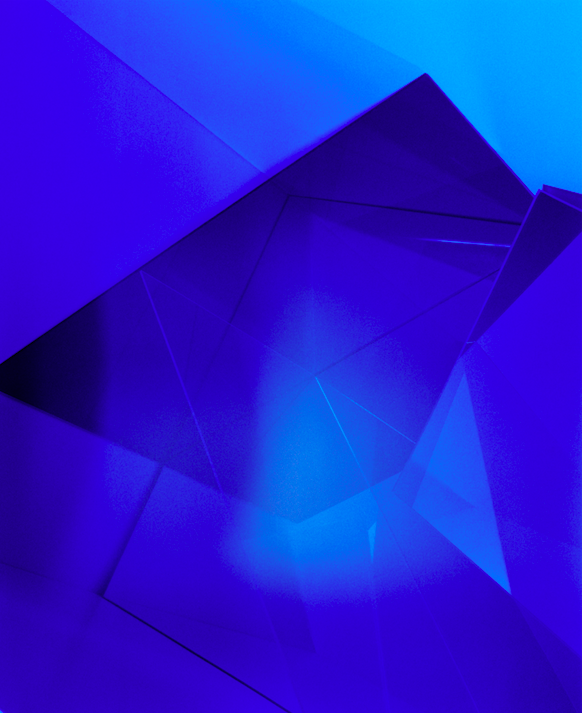
Daniela Droz, Résonance 02, 2019, courtesy of the artist and La Prairie.
For the project, she was excited to collaborate on works that matched her mission. Beauty, as eternally emphasized by La Prairie, as well, is an important aspect of her work and continues to be a main theme. She believes it is a universal theme that’s omnipresent, in a society where the sense to perceive it has been challenged over the years.
“The search for beauty is one of the main themes in my work. We are always afraid to talk about beauty in art, but I think it’s a theme that has always interested artists. What is beauty? The question of equilibrium, composition, questioning between interior and exterior. These are all questions I ask within my work,” she said. “I think we can use this external beauty to draw attention to more important things. If there is no visual default, we can focus on the essential, the message we want to convey, or the emotions we want to convey.”
The world of La Prairie, she believes, is a great match to hers. “They have so much in common in terms of interest for the material, for simplicity, purity and light. [It] is a Swiss brand that has a real history and that has passed the test of time thanks to its quality and its desire to always innovate, but at the same time respecting its traditional values,” said Droz. “I completely agree that the eyes are the mirror of the soul; it is precisely on this axis that I use the idea of the gaze in my work.”
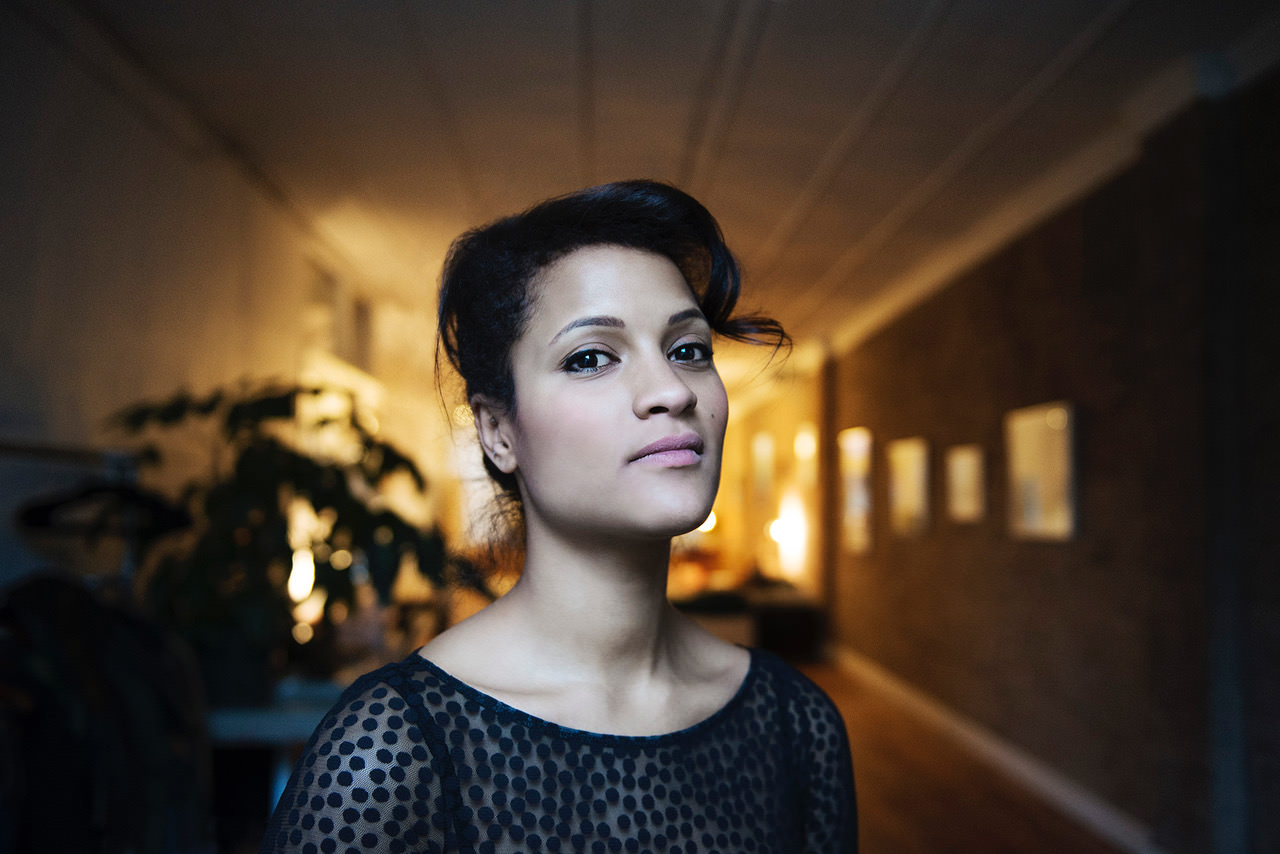
Namsa Leuba, courtesy of La Prairie.
The art director and photographer Namsa Leuba loves traveling for work. She’s inspired by discovering dynamic cultures, meeting new artists, and learning new techniques in her field. Leuba has long been fascinated by what can be revealed through the lens. “Indeed, it gives free rein to my most personal ideas,” she said. “It is a way of expressing myself that suits me perfectly. In addition, photography is an integral part of the current communication, as an image is often worth more than a thousand words.”
Her visual identity—a combination of pictorial, conceptual, and graphic facets—is also guided by her personal identity as a Swiss-Guinean woman. “My artistic work tries to illustrate the questions relating to existence through the perspective of space and time thanks to the colors, shapes, and emotions that light reveals through them,” she said. “In my work I always try to create a balance between figurative and abstract images in order to translate the different emotions and dimensions of my subjects from different angles,” she said. “In that sense, this mixture between figurative and abstract is really the conceptual dimension of the work that I produce.”
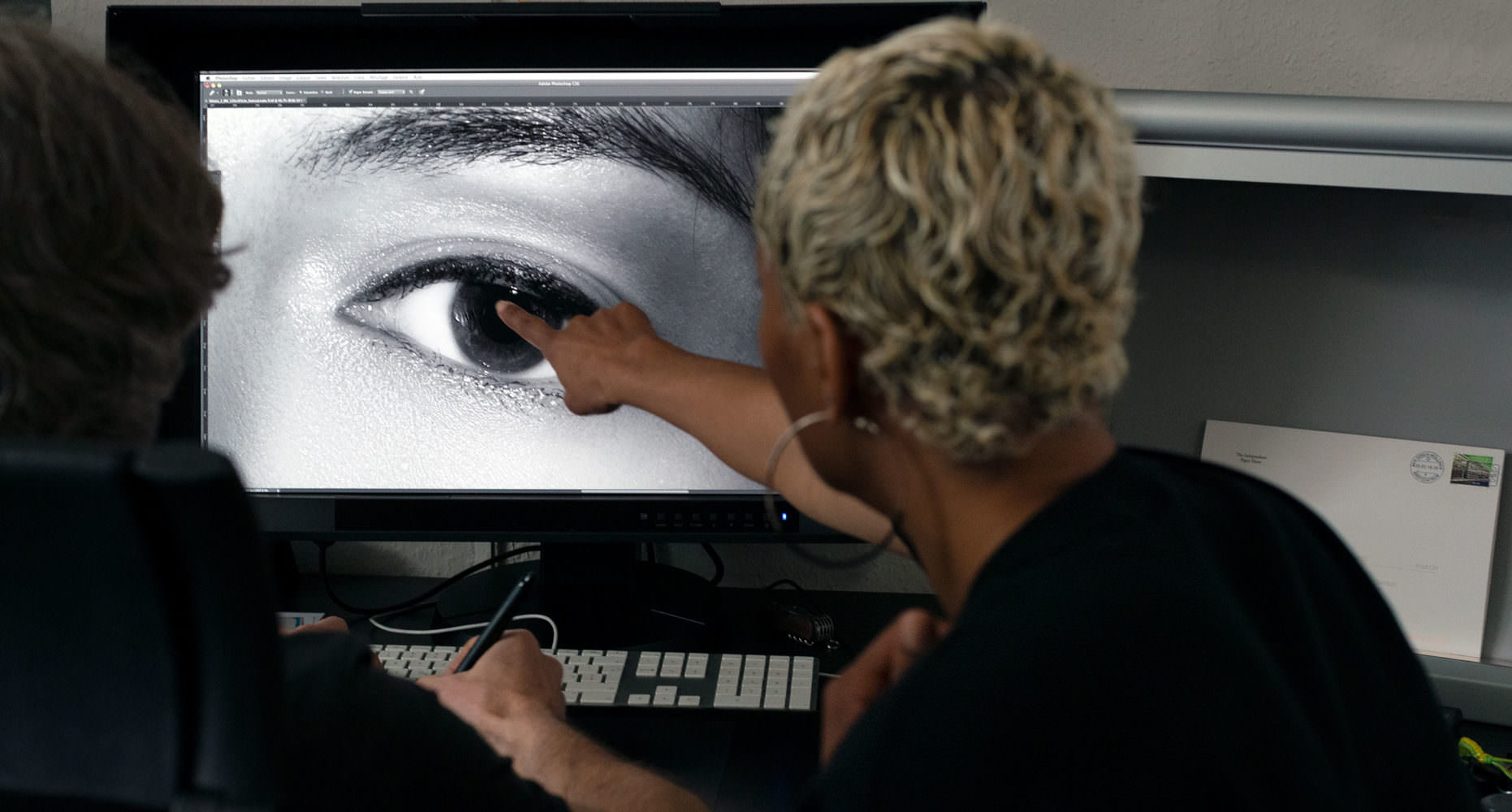
Namsa Leuba, courtesy of La Prairie.
Leuba’s creative process typically begins with a sketch in her notebook. Then, she looks for a model on the street and various materials for props (like textiles, flowers, and plastic) at the market. Finally, she shoots the photos on a digital camera in her studio and begins a search to find the right proportion, dimension, and balance between photography and graphics.
For “Eyes In Focus,” she connected with three words that she felt La Prairie embodied: Beauty, aesthetics, and emotion. “La Prairie illustrates the natural over time and releases the feelings attached to it. Time passes, leaving its mark on all of us. Sometimes these marks are signs of happiness, others signal other emotions lived. On this specific work around the eyes, I wanted to illustrate the hidden nature of emotions: hidden in us, they try to cross the veil that covers them,” she said.
“The portraits are framed by an abstract image that represents the inscription in us of the shared experience. In the manner of what we see when we close our eyes, as an impression related to the memories that remain to us—that we can always continue to see the image by closing our eyes,” said Leuba.
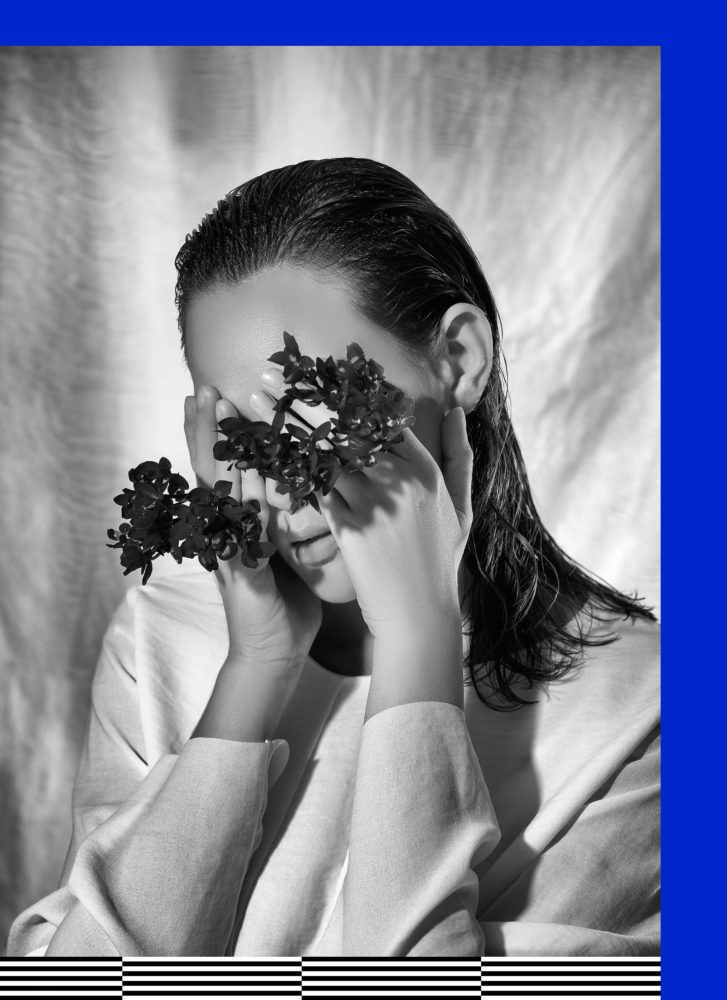
Namsa Leuba, Nanihi I, 2019, courtesy of the artist and La Prairie.
She sees beauty as ever-present in harmony. For these works, her focus on the eyes makes it possible to show this beauty, explore the way in which emotions are addressed, and take a closer look at time.
“The gaze, in my opinion, is what reveals the most inner feelings. The gaze can be avoided, but it doesn’t lie. Part of my work is precisely to try to capture that gaze or to look at what reflects the desired emotion I felt when seeing and selecting the model,” said Leuba. “Through this work, I try to conceptually illustrate time through the prism of inscribing shared experience as a passage from the present experience to the lived past. Time is then staged in the extension of the image by the frame, abstracting the impressions that persist in us of what they have evoked.”
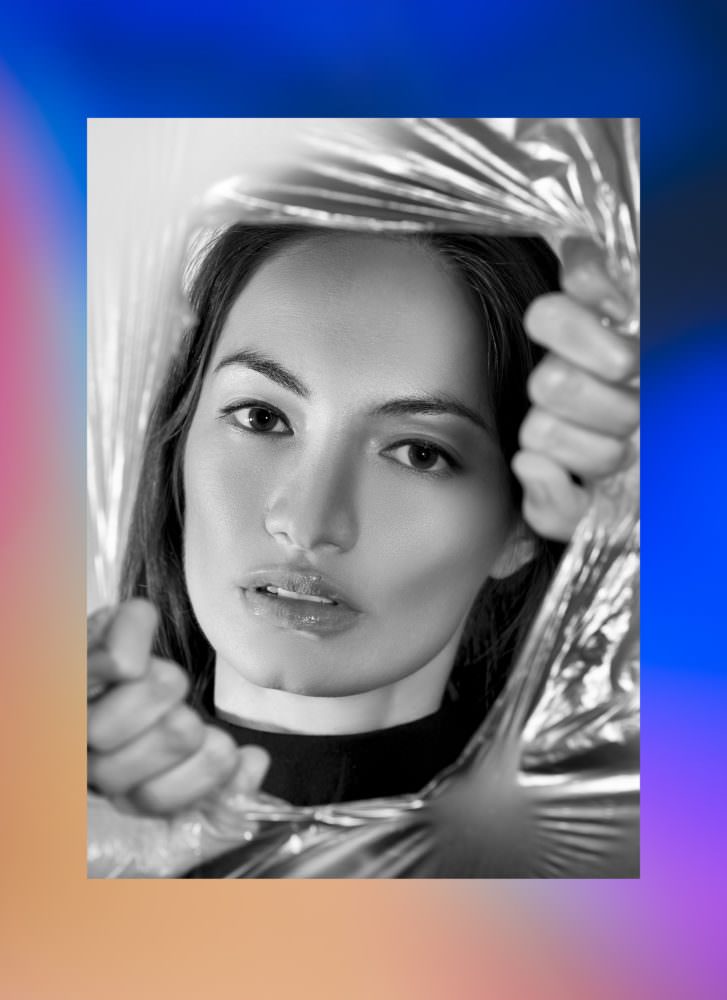
Namsa Leuba, Nanihi 2, 2019, courtesy of the artist and La Prairie.
In the portraits, Leuba wanted, overall, to reveal the veil we can hide behind, stifling our emotional connections. “To imagine that the gaze is elsewhere, that the subject is lost in her own thoughts, the gaze may be hidden, so as not to see the time flowing,” she said. “It’s in this way that I play with the gaze to share my own gaze on emotions and their inscriptions in us by the lived experience between the viewer and myself. In this case, through the gaze of the model.”
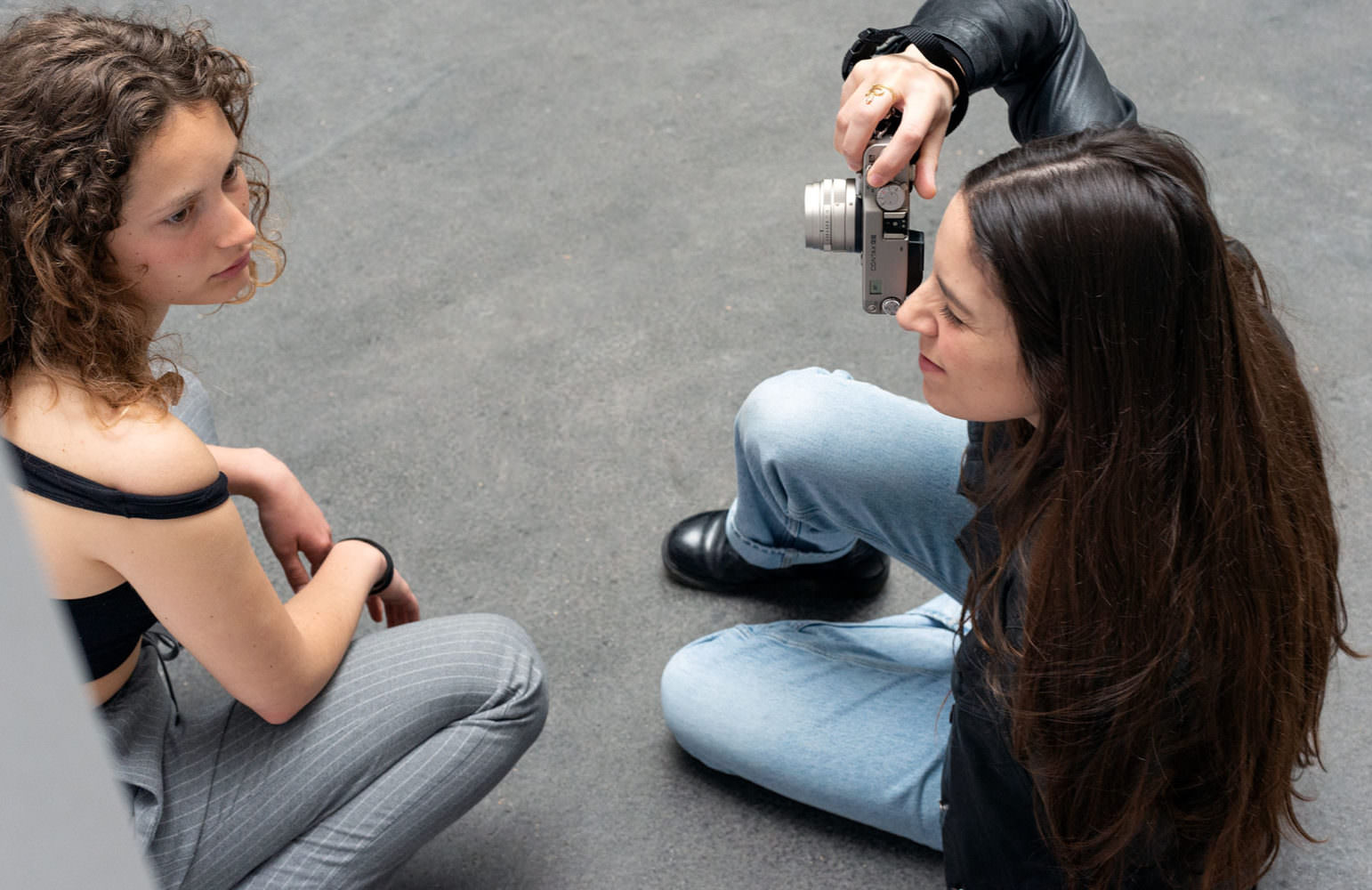
Senta Simond, courtesy of La Prairie.
Senta Simond is a visual artist working with photography and video. Her work, with a strong focus on female representation, is inspired by cinema, painting, and photography. “I think my visual identity is a mix of fashion imagery, classic portraiture, and cinematic effects,” she said. “I like the spontaneity and the speed of photography—the ability to capture very complex situations in a really fast way.”
More specifically, Simond is influenced by artists like Günther Förg, for his direct approach to the subject and very particular angles; controversial filmmaker Catherine Breillat and her relation to youth and femininity; the uncanny, psychological work of painter David Salle; and avant-garde Russian and Bauhaus photography, for its rule-breaking qualities.
“I am interested in the multi-dimensionality of the human being—all kinds of emotions, such as vulnerability, anxiety, melancholy, as well as the more conventional ones (in terms of representation), like joy and strength,” she said. “I try to capture sincerity.”
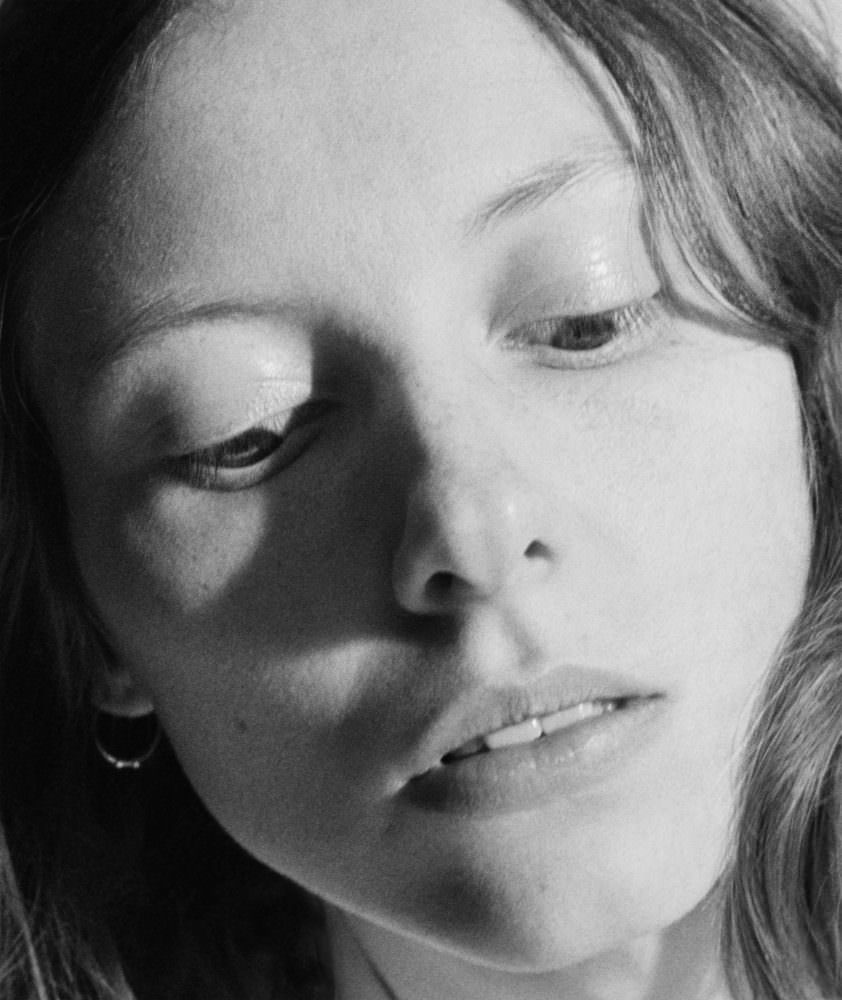
Senta Simond, Laura, courtesy of La Prairie.
She gravitates toward natural beauty, choosing to feature subjects that are familiar. “I want to show a form of realness. I want to avoid the artificial processes of beautifying a person, and what seems to be an increasingly narrow idea of what a beautiful woman looks like. I want to make ‘raw’ images of people more normal. The fact that viewers think my images are something different illustrates how affected the images we normally produce have become, or possibly always were.”
Simond’s creative process, like her work, is natural, too. If she sees someone she’d like to photograph, she asks that they meet her in their personal clothing and without makeup. This might take more than one session. Usually they are not professional models, or if they are, it’s coincidental. “I like this awkwardness and that they are not too self-aware. I am after the authentic moments. Another part is the editing of my work and finding the ‘right’ image.”
After the images are shot, she prefers not to alter them much. “I am looking at fleeting moments so for me, it wouldn’t make much sense to do a lot of retouching,” she said.
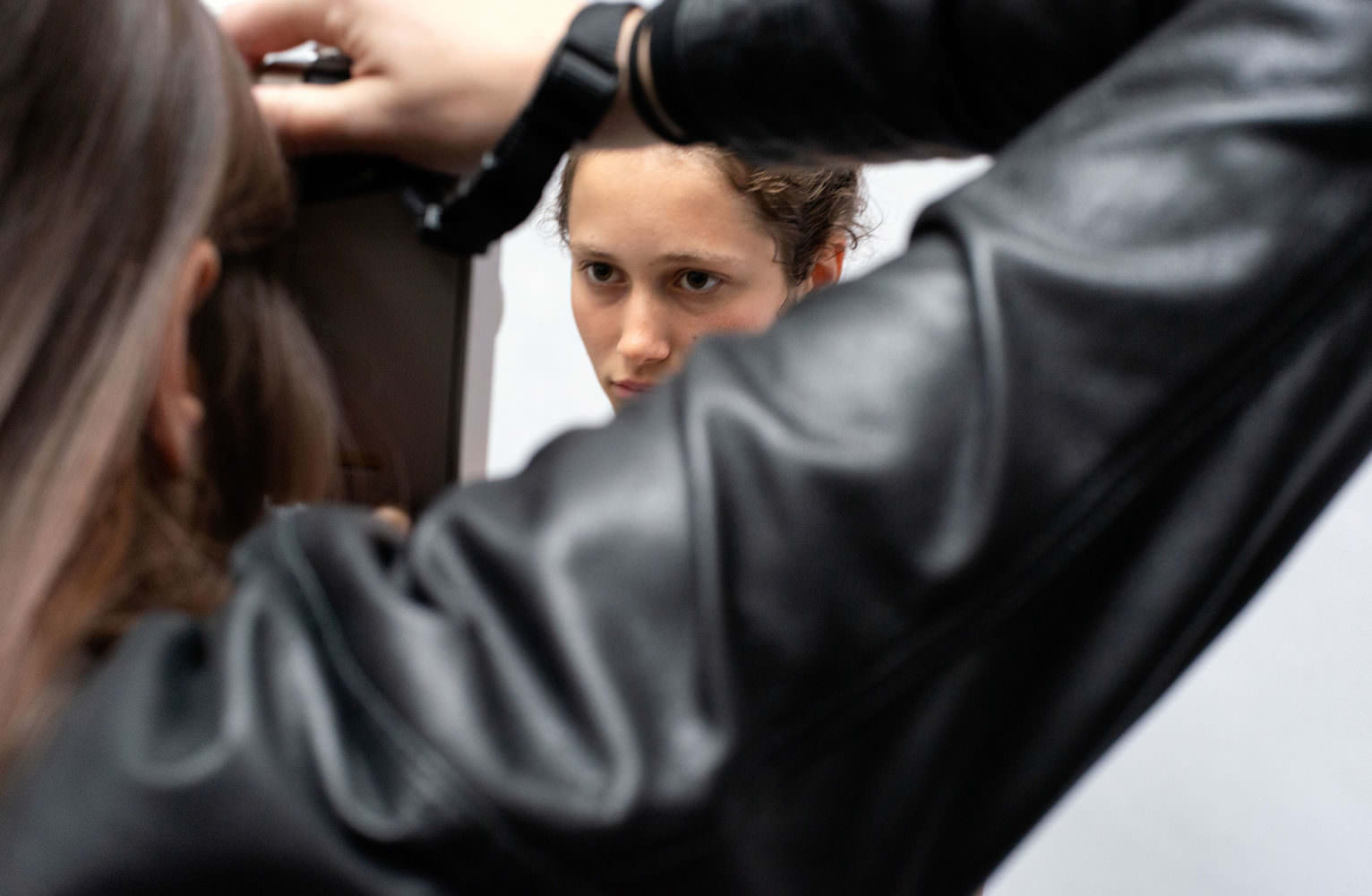
Senta Simond.
Courtesy of La Prairie.
She finds the concept of beauty to be subjective. Due to this, she hopes not to reinforce a narrow sense of beauty, but a more inclusive and open-minded approach. In line with this belief, she was excited to work with La Prairie, which she believes upholds timeless and honest qualities, as well. “I don’t think the job of art is to be beautiful but it’s often a result or a side effect,” she said, speaking about the relationship between art and beauty.”
For “Eyes in Focus,” she wants viewers to take away a few notes: be yourself and show the world that you don’t have to be perfect, strong, or happy all the time. “I hope people will feel a connection and also a range of emotions. I am especially interested in showing the multitude of faces of the people and the physical shapes of the body,” she said.
“I am playing with the gaze of my subjects by having different attitude with my subject. I know there is a term ‘the male gaze’ and ‘the female gaze.’ I hope that viewers are able to find some affinity with ‘my gaze.’”
Discover more at LaPrairie.com.


